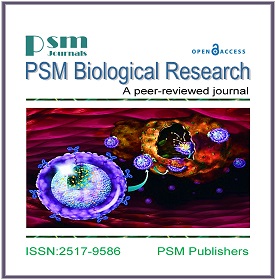Phytochemical and Antibacterial Assessment of Ageratum conyzoides Cultivated in Benue State, Nigeria
Keywords:
Goat weed, Bacteria, Phytochemical, Methanol extract, Aqueous extract.Abstract
The study was conducted to check the phytochemical composition and antibacterial potential of Ageratum conyzoides (Goat weed) leaf extracts on selected test bacteria. Samples of fresh leaves were collected and screened for phytochemicals using methanol and aqueous solvents using standard methods. The Agar well diffusion technique was used to assess the antibacterial activity of two extracts (methanol and aqueous) at varying concentrations against the chosen test organisms. Additionally, the Minimum Bactericidal Concentration (MBC) and Minimum Inhibitory Concentration (MIC) of the extracts were determined. Alkaloids, tannins, flavonoids, saponins, steroids, and phenols were found in both extracts as determined by the phytochemical investigation, however, terpenoids was absent. The statistical analysis indicated a significant difference (p<0.05) in the zones of inhibition at different concentrations among the methanol and the aqueous extract of the leaf, with the methanolic extract exhibiting stronger antibacterial activity than the aqueous extract. From the research results, it was found that both aqueous and methanol extracts have the same MIC of 50% for each test bacteria while the MBC for methanol extracts for E. coli was 40% and 25% for both Salmonella species and S. aureus and for aqueous leaf extracts, the MBC for E. coli was seen as 25% and for Salmonella species 30% except for S. aureus where no MBC was observed. The Methanol extract is more effective than the aqueous which may be due to the varying polarity of the solvents, the different phytoconstituents are soluble to varying degrees. The results of the study indicate that more work is necessary to identify and evaluate the effectiveness of the A. conyzoides leaf extracts in order to potentially use them for the treatment of certain bacterial illnesses.
Downloads
Published
How to Cite
Issue
Section
License
Copyright (c) 2024 PSM

This work is licensed under a Creative Commons Attribution-NonCommercial 4.0 International License.







